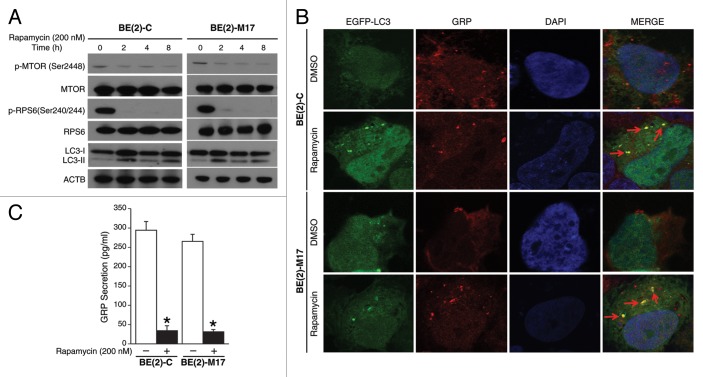Figure 3. Rapamycin induced co-compartmentalization of GRP and LC3-II. (A) BE(2)-C and BE(2)-M17 cells were incubated with rapamycin (200 nM). Total protein was extracted at the indicated time points and probed (35 µg of total protein/lane) with p-MTOR, MTOR, p-RPS6, RPS6, and LC3 antibodies. ACTB was used to monitor equal protein loading. (B) BE(2)-C and BE(2)-M17 cells were transfected with an EGFP-LC3 plasmid. At 24 h post-transfection, cells were treated for 2 h with DMSO or rapamycin (200 nM). Cells were fixed and immunostained with antibody against GRP and imaged by confocal microscopy. (C) BE(2)-C and BE(2)-M17 cells were plated in serum-free media and treated with DMSO or rapamycin (200 nM) for 48 h. ELISA was used to analyze GRP secretion. Values shown are mean ± SEM of three separate experiments (*P < 0.05 vs. no rapamycin).

An official website of the United States government
Here's how you know
Official websites use .gov
A
.gov website belongs to an official
government organization in the United States.
Secure .gov websites use HTTPS
A lock (
) or https:// means you've safely
connected to the .gov website. Share sensitive
information only on official, secure websites.
